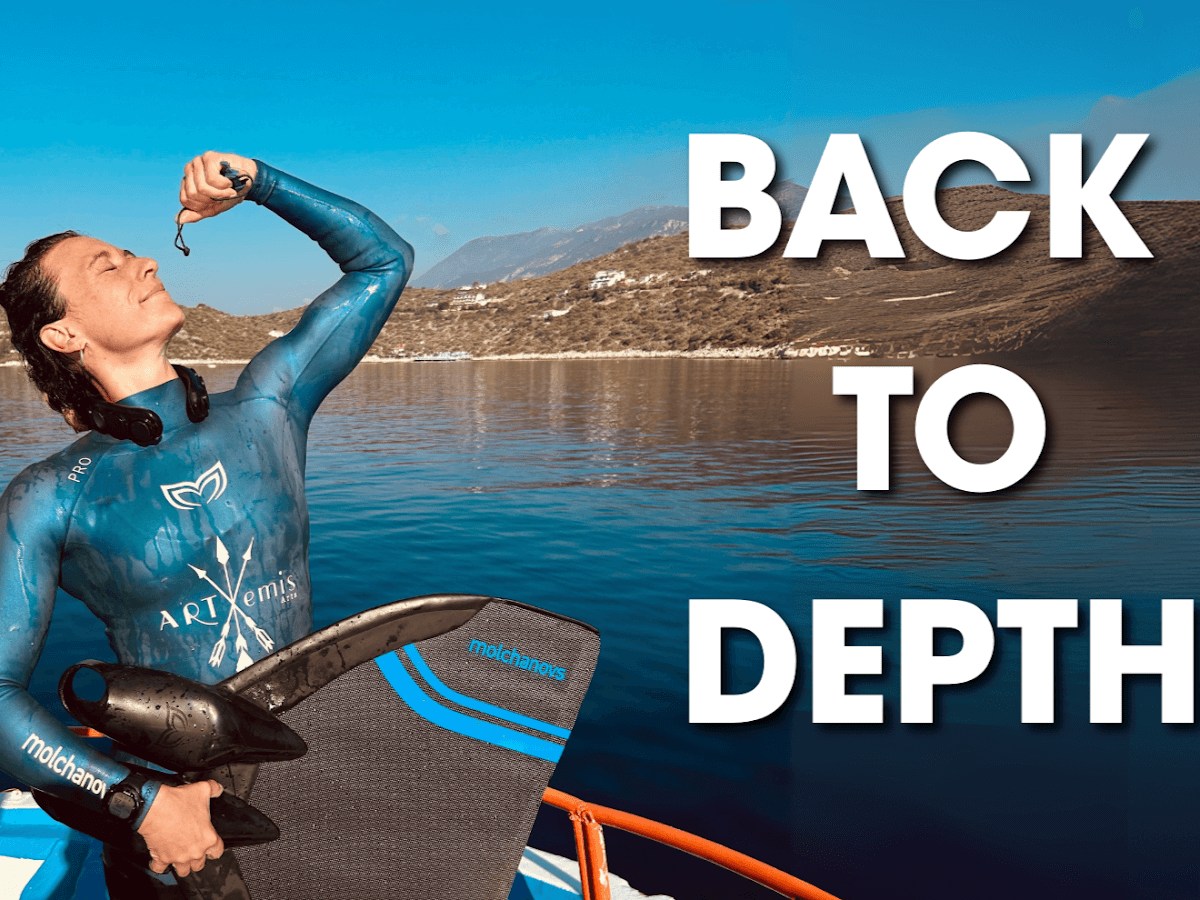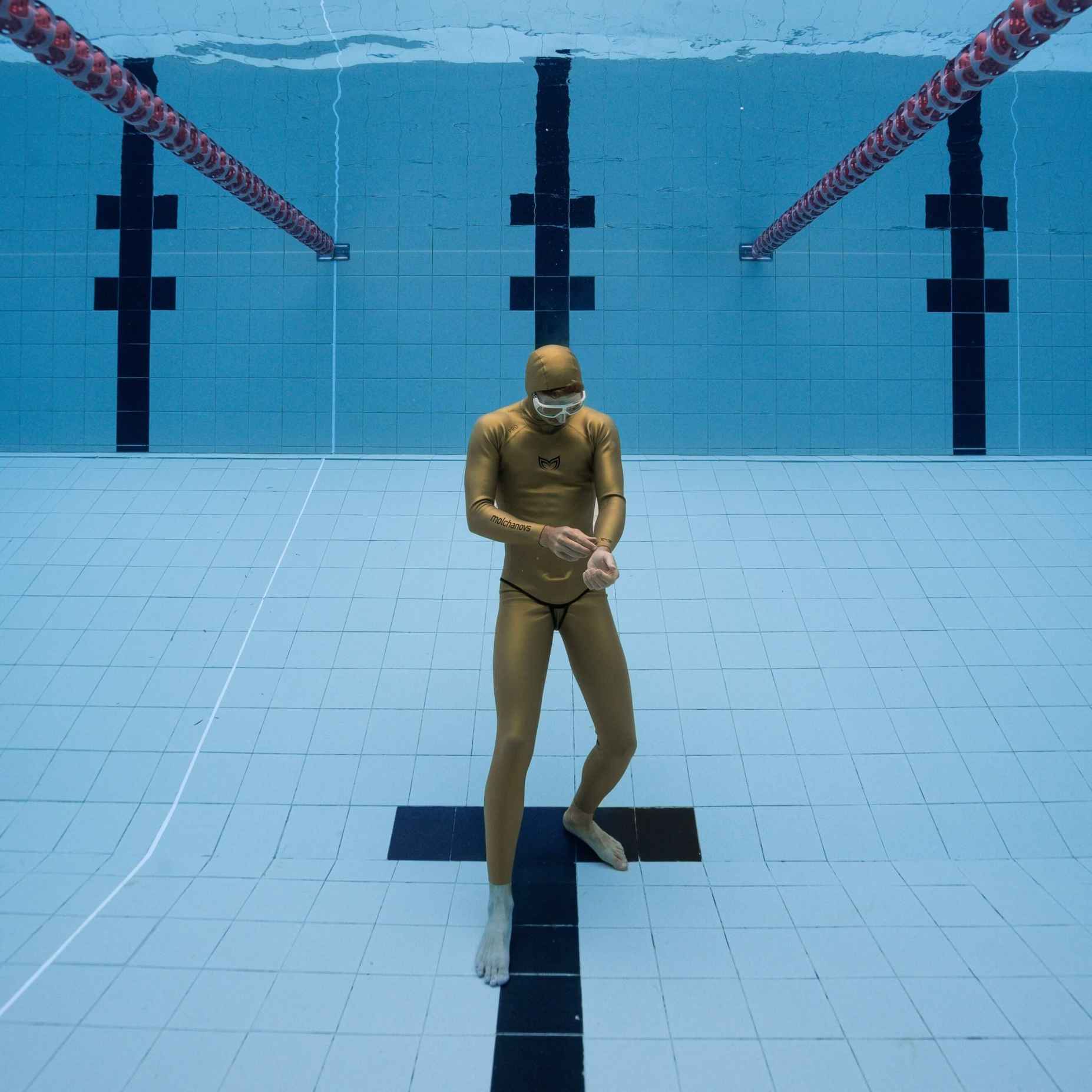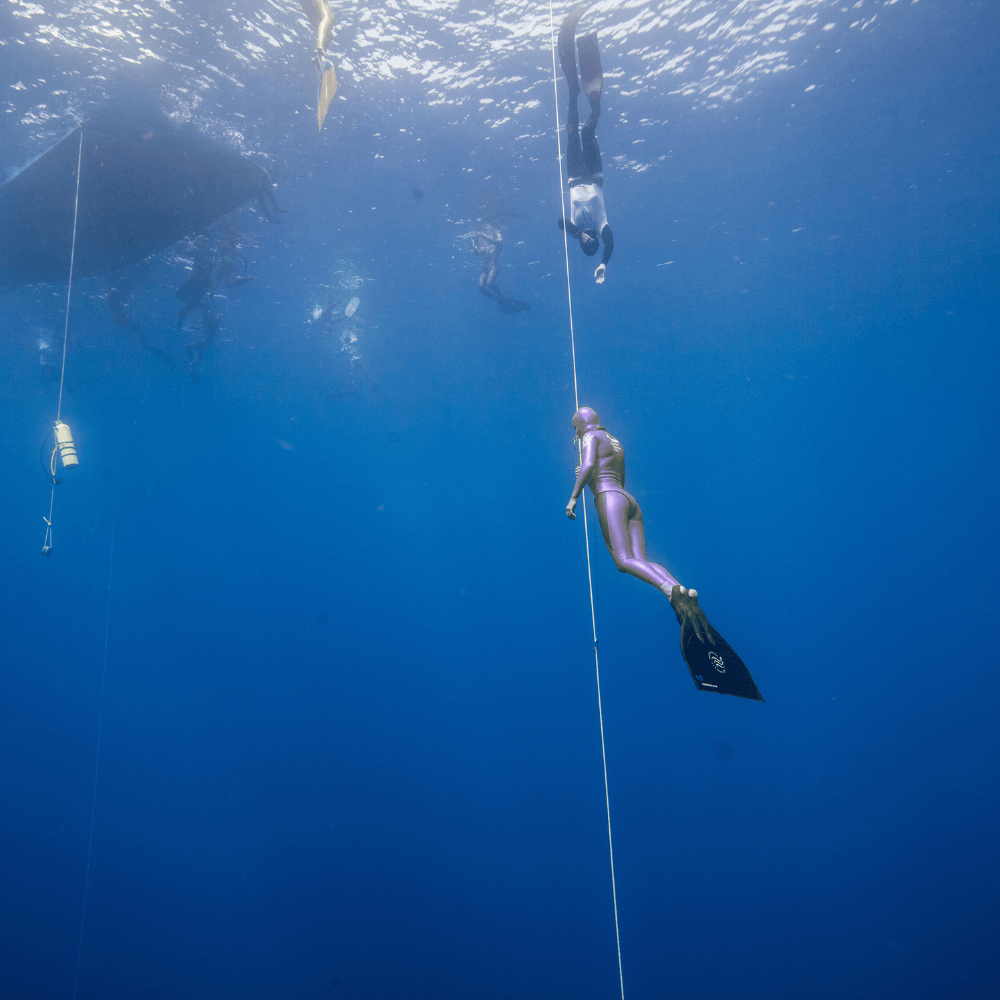심층 분석을 위한 Talya Davidoff의 팁

"나는 다이빙하는 것처럼 훈련하고 훈련하는 것처럼 다이빙하는 것을 굳게 믿습니다." - 탈리아 다비도프
에 의해 제레미 스토튼 &
Talya Davidoff의 기여
편집자 디나 린치
건강하더라도 프리다이빙을 몇 달간 쉬는 것은 완전히 정상적인 일입니다. 결국, 당신은 당신의 삶을 살아야합니다. 그러나 몇 달 동안 물에 들어가지 않은 후 다시 수심으로 돌아가는 것은 Talya Davidoff와 같은 프로페셔널이자 세계 챔피언 프리다이버에게도 위협이 될 수 있습니다. 특히 안전과 적응을 염두에 두고 심층 훈련을 다시 시작하는 방법에 주의해야 합니다. 다비도프는 긴 휴식 후에 다시 깊이 있게 돌아갈 수 있도록 준비하기 위해 다음과 같은 방법을 권장합니다.
심층적인 접근이 불가능한 훈련
깊이에 쉽게 접근할 수 없는 곳에 살고 있다면 웨이트 트레이닝, 유산소 운동, 풀 트레이닝을 병행하는 것이 좋습니다. 유연성을 회복하는 것도 매우 중요합니다. 깊이를 시도하기 약 2주 전에 다비도프는 포지티브(들이쉬는) 스트레칭과 네거티브(내쉬는) 스트레칭 모두에 초점을 맞춰 폐 스트레칭을 많이 합니다. 이는 수축을 관리하는 데 도움이 될 수 있습니다.
 깊이 있는 훈련은 지름길이 없는 과정입니다. © 탈리아 다비도프(Talya Davidoff)의 사진
깊이 있는 훈련은 지름길이 없는 과정입니다. © 탈리아 다비도프(Talya Davidoff)의 사진
도착
오랜 휴식 후 심층 훈련을 시도할 목적지에 도착하면 다비도프는 곧바로 물에 들어가는 것을 피합니다. 적응하도록 놔두는 것이 좋습니다. 그녀는 휴식을 취하고, 시차로 인한 피로를 극복하고, 수분을 공급하고, 수분을 공급하고, 수분을 공급할 것을 권장합니다. 물에 접근하는 것을 생각하기 전에 충분한 휴식을 취했는지 확인하세요.
1일차
실제 다이빙 첫날, 다비도프는 스트레칭과 이퀄라이제이션(EQ) 훈련으로 시작합니다. 다이빙을 시작할 때 편안한 수심으로 이동하십시오. 다비도프는 개인 최고 기록(PB)의 40% 이하를 지침으로 제시하고 무리하게 무리하지 말 것을 제안합니다. 다비도프는 100m 다이버이므로 40m보다 더 깊은 수심에서 시작하지 않습니다. EQ 훈련을 연습하기 위해 편안한 수심까지 완전 폐 다이빙을 하십시오. 일단 그게 편해지면 Wave 3 프리다이버 또는 이에 상응하는 교육을 받은 사람, 그런 다음 마우스필 EQ를 연습하면서 편안한 수심으로 몇 번의 기능적 잔류 용량(FRC - 수동 호기) 다이빙으로 전환할 수 있습니다. 그런 다음 물에서 나와 휴식을 취하세요.
2일차
다비도프는 1일차를 반복하지만 다이빙 반복 횟수는 줄었습니다. 그녀는 여러 잔기량(RV - 최대 호기) 다이빙을 추가합니다. (이런 종류의 훈련을 수행할 수 있는 훈련을 받고 자격이 있거나 W3i 강사나 코치의 지도를 받는 경우에만 이 작업을 수행하십시오.), 깊이에서 느낄 압력을 시뮬레이션합니다. 적절한 안전 다이버가 있는지 확인하고 편안한 수심으로 이동하세요. 3회 이상의 RV 다이빙을 하지 마십시오. 그런 다음 물에서 나와 휴식을 취하세요.
3일차
다비도프는 긴장을 풀고 수분을 공급하기 위해 하루 더 휴식을 취합니다. 그녀는 필요에 따라 전해질로 수분을 보충할 것을 권장합니다.
 깊이를 훈련하는 동안 최대한의 노력이 아닌 편안함을 추구하십시오. © 탈리아 다비도프(Talya Davidoff)의 사진
깊이를 훈련하는 동안 최대한의 노력이 아닌 편안함을 추구하십시오. © 탈리아 다비도프(Talya Davidoff)의 사진
4일차
PB의 60% 수준으로 다시 깊이로 돌아간 첫 번째 다이빙에서 그녀의 주요 목표는 긴장을 풀고 편안해지며 먼저 작업해야 할 것이 무엇인지 파악하는 것입니다. 이는 일반적으로 EQ입니다.
경쟁이 당신의 목표라면, 경쟁 환경에 들어가 그 환경에 대해 다시 알아가기 시작하십시오. 다비도프는 자신을 신나게 만드는 음악을 들으며 대회를 준비합니다. 이것은 다이빙 전 의식의 필수적인 부분입니다. 그녀는 즐거운 시간을 보내고 감사를 표현하면서 긴장을 풀어줍니다. 그런 다음 그녀는 옷을 입고 물 속에 누워서 물에 적응하기 위해 약 10분 동안 스노클을 착용한 채 얼굴을 아래로 향하게 합니다. 그녀가 바다와 긍정적이고 평화로운 관계를 유지하는 것은 매우 중요합니다. 그 후에는 준비 운동을 전혀 하지 않습니다. 그녀는 초기 다이빙에서 포유류 다이빙 반사(MDR)를 자극하는 것을 선호합니다.
그런 다음 다비도프는 다이빙 라인으로 곧장 가서 거기에 끈을 걸어 놓습니다. 그녀는 등을 대고 떠서 긴장을 풀기 위해 부드럽고 집중되지 않은 호흡을 할 것입니다. 때때로 그녀는 사람들과 이야기를 나누고 농담을 해서 기분을 밝게 하고 자신을 중심으로 되돌리며 프리다이빙이 재미있다는 것을 스스로 상기시키고 삶의 균형을 유지하기 위해 노력합니다.
그녀는 4분간의 안내방송을 듣고 다이빙에 집중하기 시작합니다. 그녀는 신체 스캔을 하고 마치 거품을 불듯이 입술로 공기를 불어 미주 신경을 자극하여 심박수를 늦추고 진정시킵니다. 그런 다음 그녀는 부드럽고 집중된 호흡을 시작합니다. 1분 남았을 때, 그녀는 최대 흡입 전에 가벼운 퍼지 호흡을 두 번 할 수 있습니다. 몸에 깊이를 다시 알릴 때 폐에 무리를 주지 않는 것이 매우 중요합니다. 몸이 다시 짐을 싸는 데 익숙해지려면 적어도 며칠이 걸릴 것입니다.
프로세스에 집중
최대 깊이로 빨리 돌아가고 싶은 유혹을 조심하세요. 이는 쉽게 실수로 이어질 수 있으며, 자신의 목표에만 집중하고 스포츠를 즐기는 것을 잊음으로써 프리다이빙에 대한 부정적인 경험을 하거나 자신에게 상처를 입힐 수 있습니다. 다비도프는 자신의 부담을 덜고 편안함에 중점을 두고 천천히 발전하는 것을 좋아합니다. 적응 기간을 마친 후 그녀는 PB의 60%부터 시작하여 한 번에 5미터를 추가합니다.
다비도프는 PB의 약 80%에 도달하면 전략을 전환하고 한 번에 1~2미터씩 추가합니다. 다이빙 내내 그녀는 휴식과 깊이 다이빙 능력을 연마하는 과정에 중점을 둡니다.
휴식은 필수입니다
휴식을 취하는 것도 중요합니다. 다비도프는 이틀 연속으로 심층 다이빙(PB의 80% 이상)을 수행하지 않습니다. 더 깊이 들어갈수록 다이빙 사이에 쉬는 날이 더 많아집니다. 신경계를 조절하고 무리하지 않고 편안한 상태에 도달하려면 휴식을 취하는 것이 중요합니다. 너무 세게 밀고 과도하게 훈련하는 것은 매우 쉽습니다.
 최종 목표가 아닌 프로세스에 집중하세요. © 탈리아 다비도프(Talya Davidoff)의 사진
최종 목표가 아닌 프로세스에 집중하세요. © 탈리아 다비도프(Talya Davidoff)의 사진
다비도프의 조언은 “천천히, 여유롭게, 재미있게 지내고, 모든 것에 호기심을 갖고 접근하고, 당신이 바로 당신이고 프리다이빙을 하게 되었다는 사실을 기억하세요”라고 그녀는 말했습니다. "우리는 수영장에 있는 큰 아이들일 뿐입니다. 너무 심각하게 받아들이지 마세요. 우리 모두는 재미를 즐기기 위해 이 일에 뛰어들었고, 그것을 기억하는 것이 중요합니다."
Molchanovs YouTube 채널에서 100m 프리다이버인 Talya Davidoff가 휴식 후 심도 훈련에 다시 참여하는 방법에 대해 이야기하는 모습을 시청하세요. 여기.




코멘트를 남겨주세요